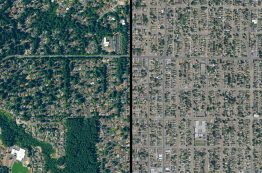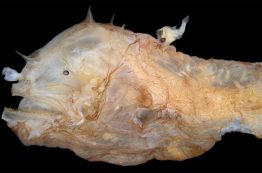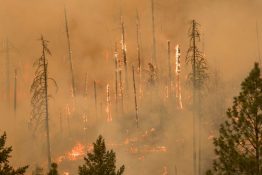When it comes to invasive species, we tend to hear most about the ones that are the most sensational or scariest to human beings, even though their ecological impact is pretty minor. We have all heard a lot of buzz from Blaine, Washington surrounding the giant Asian hornet (commonly referred to as a “murder hornet” in popular media), but its impact remains to be seen.
Read more »Systemic racism has consequences for all life in cities
Social inequalities, specifically racism and classism, are impacting the biodiversity, evolutionary shifts and ecological health of plants and animals in our cities. That’s the main finding of a review paper led by the University of Washington, with co-authors at the University of California, Berkeley, and University of Michigan, which examined more than 170 published studies and analyzed the influence of systemic inequalities on ecology and evolution.
Read more at UW News »New studies show how to save parasites and why it’s important
Parasites have a public relations problem. Unlike the many charismatic mammals, fishes and birds that receive our attention (and our conservation dollars), parasites are thought of as something to eradicate — and certainly not something to protect. But only 4% of known parasites can infect humans, and the majority actually serve critical ecological roles, like regulating wildlife that might otherwise balloon in population size and become pests.
Read more at UW News »Deep-sea anglerfishes have evolved a new type of immune system
Deep-sea anglerfishes employ an incredible reproductive strategy. Tiny dwarfed males become permanently attached to relatively gigantic females, fuse their tissues and then establish a common blood circulation. In this way, the male becomes entirely dependent on the female for nutrient supply, like a developing fetus in the womb of a mother or a donated organ in a transplant patient. In anglerfishes, this unusual phenomenon is called “sexual parasitism” and contributes to the reproductive success of these animals living in the vast space of the deep sea, where females and males otherwise rarely meet.
Read more at UW News »Expert FAQ: Wildfires in the Pacific Northwest during the COVID-19 pandemic
Forest fires are one of nature’s oldest land management tools. For more than 10,000 years, Indigenous people in the Pacific Northwest have harnessed the power of fire to control the threat of destructive wildfires and encourage new growth across landscapes. In recent centuries, as the number of people living in forested areas has increased and large amounts of fuel have built up over years of suppression, large seasonal wildfires are becoming more common.
Read more at UW News »





